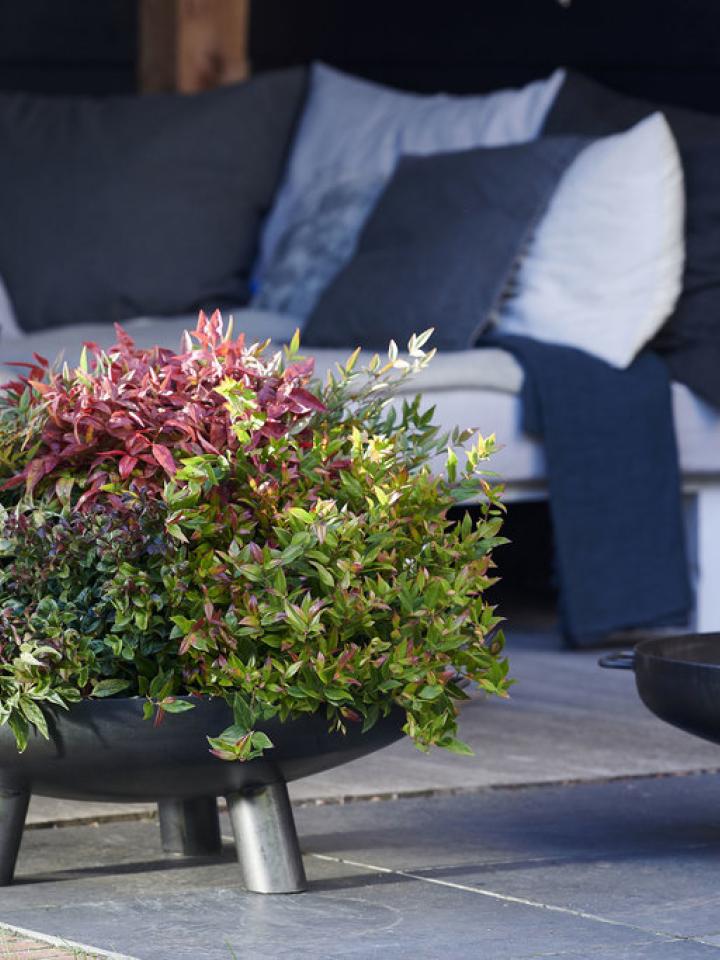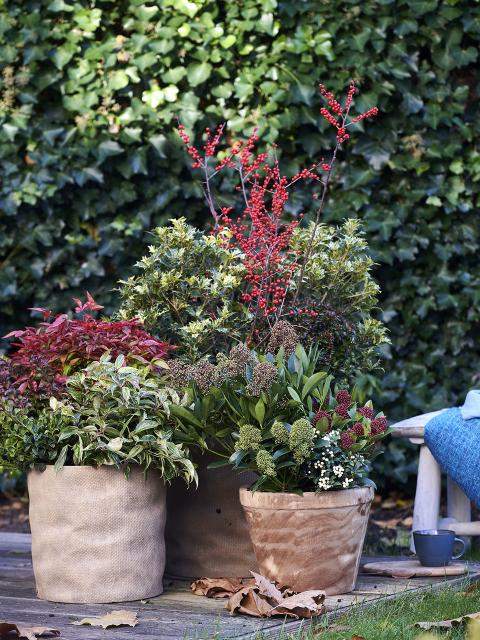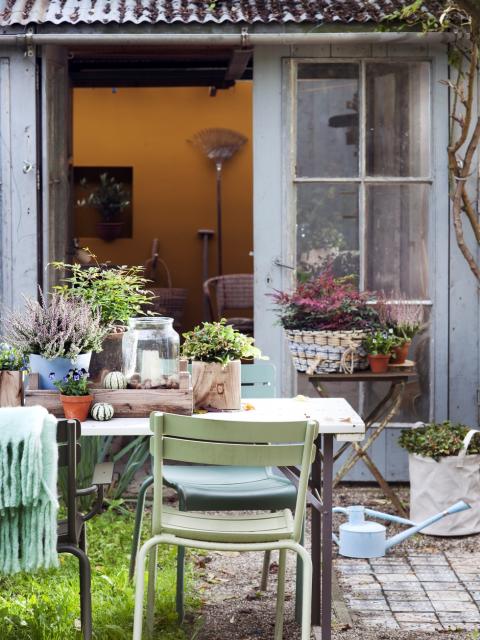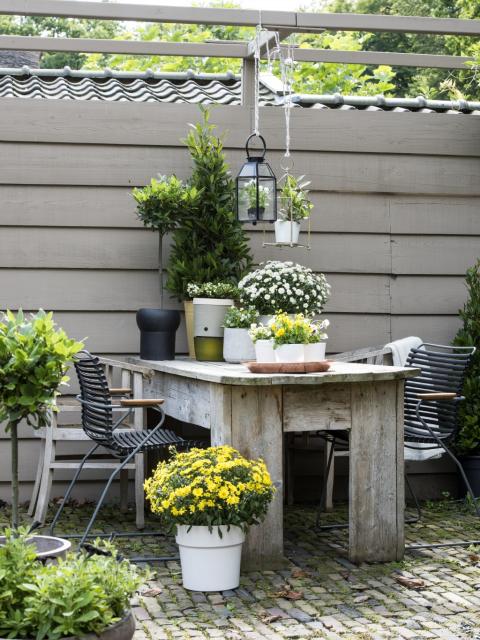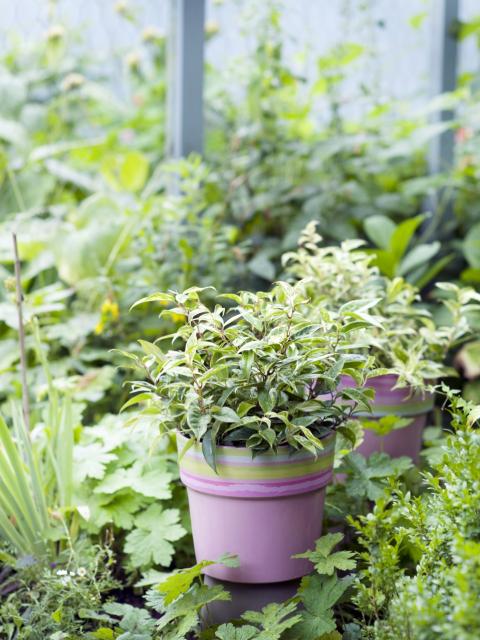Colours and shapes
Hardy and colourful, Leucothoe ensures a fabulous look for your garden, patio or balcony in the autumn and winter. Generally speaking the plant has elongated or spear-shaped leaves which are green, pale yellow, pink, or red, changing to purple in autumn. New foliage is pale green, then turns dark green and then changes in the autumn to dark red, but there are also varieties with variegated leaves. The lighter the spot where you place Leucothoe, the more beautiful the colour change will be.
This beautiful ornamental shrub can be planted in the soil, but looks equally good in pots and containers. The colourful display is particularly impressive in correspondingly flamboyant pink, lilac or orange containers the turn it into an autumn celebration. For a natural look match Leucothoe with weathered earthenware or corten steel (metal containers with a warmer rust colouring).
ORIGIN
Leucothoe is primarily native to mountainous forest areas from North America through to the Far East. This ornamental shrub is a member of the heather family, but grows much larger than the average heather plant. There are some 25 different varieties, each with their own leaf shape or colour. The size of the plant also varies between 30 and 80 cm. Leucothoe flowers in the late spring with clusters of small white or pink flowers. The flowers have an attractive shape: they look just like tiny bells.
SYMBOLISM
The name Leucothoe derives from Greek mythology. There are various explanations, the most obvious of which is that the lady in question was a mortal princess who fell in love with Apollo. Her father disapproved of her love, and buried her alive. Apollo rescued Leucothoe by transforming her into a plant which still blushes with love.
In the Far East the plant is known as 'campfire' because the new shoots resemble flames. Metaphorically speaking, Leucothoe keeps you warm in the cold months simply by looking at it.

